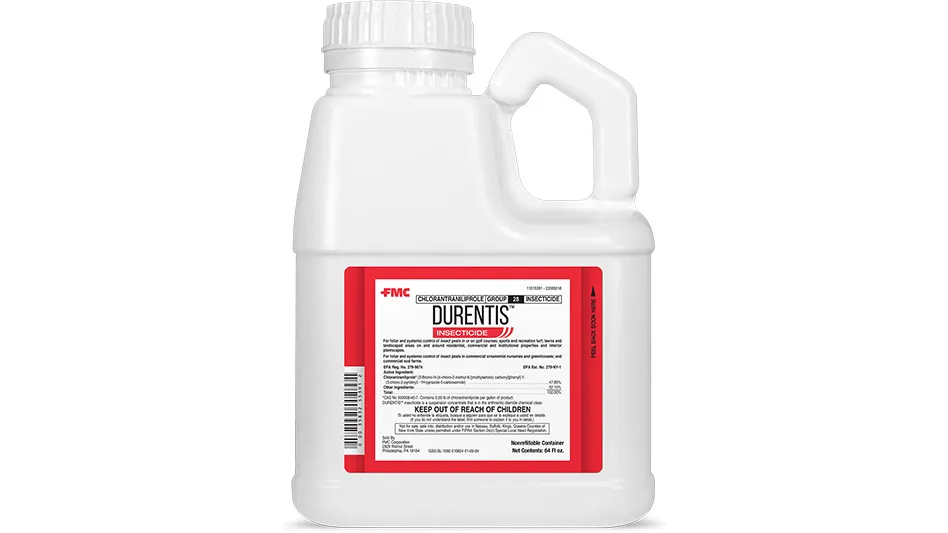

Gearing up for the lawn care season can seem daunting. Between hiring seasonal staff, selling contracts, training crews and making schedules, it’s easy to let something slip through the cracks. But making sure your equipment is ready to start service will help you save time and money all season long.
We gathered up some tips from LCOs across the country to see how they get their equipment ready for spring and make sure it runs all season long.
Sharpen up.
Crews at Arlington Lawn Care in Erie, Pennsylvania, make sure all of the equipment is ready to go before leaving for any job, any time. That means tight blades, belts and gas caps.
"I tell all my guys, make sure your tools are sharp because another one of the big accidents that happens out on the field is when you’re using a dull set of pruners,” says owner Rich Arlington. With a dull blade, technicians are working extra hard to prune branches, which can result in cut fingers or hands.
"It's just easier if you always make sure your tools are sharp," he says. That’s why each Monday, Wednesday and Friday the in-house mechanic sharpens every single piece of equipment.
The long haul.
When it comes to trimmers and edgers, properly maintained equipment should last at least a few years, says Andrew Morse, department head for maintenance at Belknap Landscape in New Hampshire. He recommends changing blades on them each year and placing trimmers and edgers on racks when transporting them to various job sites.
“We try our best not to put them in the back of a pickup truck since other stuff can fall on them,” he says. “Even the racks we like to keep away from everything else.”
Empower your crews.
At Rothschild Lawn Care in southern Florida, Kevin Rothschild makes maintenance a part of the daily routine for crews. Each technician is responsible for cleaning their equipment and checking for any leaks, bad connections or other issues.
If there is an issue, equipment is marked for repair and placed in a special area of the shop and a replacement is used until the equipment is fixed and returned to the rotation.
“We also try to make sure that we’re ending the day with an empty tank,” he says. “That way, we’re not wasting anything but we’re also not letting it sit overnight.”

© kev303 | iStockphoto
Know what you need.
At the beginning of the season, Frank Capone at Capone Landscape in Wakefield, Massachusetts, makes it a point to have all handheld tools inspected. Taking stock of the tools gives him an idea of how many he’ll need to replace later in the season.
“Every winter, we do air filters, oil filters, spark plugs and fuel filters. We go over nuts and bolts and springs,” Capone says. “We have a set number we need and we’ll replace them as we go if necessary.”
Keep corrosion at bay.
Lawn treatments involve harsh chemicals and herbicides that can deteriorate metal over time, causing clogs and reducing equipment performance. At Arizona Weed King, teams clean and recalibrate their equipment at least once a month to minimize this factor.
“You can get it to the point where old enough equipment could have a quarter of the size of the opening, so it can get really low and you have to stay on top of cleaning and replace the wearable parts as often as you can,” says COO Lance Robinson. “It’s not hard to calibrate your equipment if you stay on top of it.”
Check your calibration.
Ensuring the correct output crucial to sprayer and spreader applications, so John Benefield, lawn care specialist at Green Leaf Nursery in Kentucky, pays close attention to the maintenance schedule in his owner’s manuals and checks output regularly.
“Making sure that the output’s correct, that’s crucial,” Benefield says. “If you don’t put out the right amount of weed control product, there’s a potential that you’re not going to get any kill out of it. If you put down too much, there’s potential you could burn the turf.”
“It’s just easier if you always make sure your tools are sharp.” Rich Arlington, owner, Arlington Lawn Care
Use it or lose it.
The most reliable way to keep motorized equipment running is just to make sure it gets regular use, says
“That’s the thing about two-cycle equipment: The best thing you can do is run it every day,” says Chester Buczynsk, owner of Big Lakes Lawncare in San Antonio, Texas. “Most people, they use their chain saw every week or the weed whip once a month, and the carburetor gums up and things get sticky and gooey inside, and then you’re having issues with a seemingly brand-new chainsaw because you’ve only used it three times.
“A weed whip, if you run it 10 hours a day, five days a week, it can be a tank. It can last forever with just about no maintenance.”
Though he doesn’t specifically trade out equipment so it sees daily action, he does rotate it regularly through his crews.
Finish the season right.
To avoid problems the following season, you have to make sure everything is clean before it’s stored for the winter to prevent rusting, corrosion or leaks, says Ron Evans, owner of Green Up Lawncare in Texas.
They don’t leave anything to chance and spend a full day at the end of the season cleaning out equipment and properly storing it.
“We have some fun and bring in lunch for everyone because that’s the same day we do our inventory and it’s just sort of a good way to say, ‘Hey, we did it. We made it through another season,’” Evans says.

Explore the February 2019 Issue
Check out more from this issue and find you next story to read.
Latest from Lawn & Landscape
- Landscape Workshop acquires Cut Above Enterprises
- Scythe debuts new generation of M.52
- New identities
- Ruppert promotes Anderson to director of talent acquisition
- Fleet on the Street
- Man in the mirror
- EverSmith Brands appoints Ken Hutcheson as its new CEO
- Manitou unveils new Woodcracker tree saw with grapple





